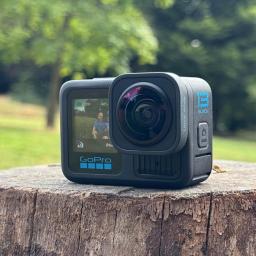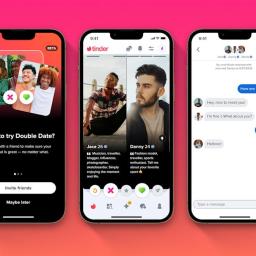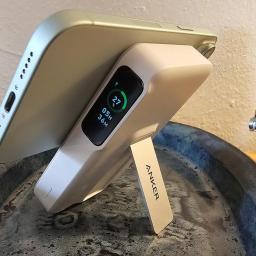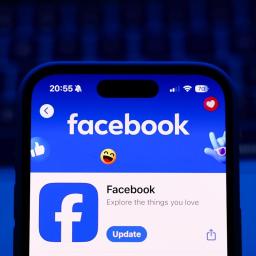 |
by Will Shanklin on (#6Y2PW)
The third Silent Hill movie is still heading to theaters. According to Deadline, Return to Silent Hill will premiere on January 23, 2026. The film is directed by Christophe Gans, who also helmed the original 2006 adaptation.Return to Silent Hill is based on the 2001 game Silent Hill 2. (Bloober Team's 2024 remake was one of our favorite games of the year.) The movie adaptation stars Jeremy Irvine and Hannah Emily Anderson. Akira Yamaoka, the game franchise's original composer, handles the score.Konami / YouTubeLike the game it's based on, the film's protagonist is James Sunderland (Irvine). After a crushing breakup with Mary (Anderson), James lives up to the billing and... returns to Silent Hill. What he finds is a town transformed by a mysterious evil. As James searches for Mary, he faces terrifying creatures and unravels the truth. Psychological horror commences.In 2022, Gans told IGN that it's "totally independent" from the last two films. "Silent Hill is a bit like Twilight Zone, the Fourth Dimension, a place where anything and everything can happen," he said. In an interview with Le Point, Gans added that he wrote the screenplay during pandemic lockdowns. "I shot it in early 2023," he said (translated from French). "The film was supposed to be finalized in April 2024, but because of the executive producers, it dragged on, and I finished it last January." (Shots fired.)The movie doesn't yet have a full theatrical trailer. But you can check out its 2022 teaser trailer below.This article originally appeared on Engadget at https://www.engadget.com/entertainment/return-to-silent-hill-is-coming-to-theaters-next-january-163409009.html?src=rss
|
 Engadget is a web magazine with obsessive daily coverage of everything new in gadgets and consumer electronics
Engadget is a web magazine with obsessive daily coverage of everything new in gadgets and consumer electronics
| Link | https://www.engadget.com/ |
| Feed | https://www.engadget.com/rss.xml |
| Copyright | copyright Yahoo 2026 |
| Updated | 2026-01-04 23:15 |
 |
by Matt Tate on (#6Y2PX)
GOG's Preservation Program launched in late 2024 and the number of included games has doubled since the initial wave, currently sitting at 183. The latest headline-grabbing additions are the first four mainline Devil May Cry games and Mortal Kombat 1+2+3.Devil May Cry: HD Collection was first released in 2012 and includes the first three entries in Capcom's enduring action series, all playable in 1080p/60fps (a big deal at the time). Devil May Cry 4: Special Edition, which celebrates its 10th anniversary this year,has also been added. Add to these the Mortal Kombat trilogy and you've got major entries in two of the most influential series in their respective genres guaranteed to be compatible with modern hardware and protected against DRM.The GOG Preservation Program pledges to ensure classic games remain playable beyond the point that their developers stop supporting them, safeguarding them for future generations to discover. As gaming moves even further towards an all-digital future, preservation remains a hot topic in the industry, with major publishers such as Ubisoft making a point of reminding players that they don't technically own the digital games they purchase (see: The Crew 2 players).Until July 2, you'll be able to purchase the newly added Devil May Cry games as a bundle for 67 percent off. Here are the other games also joining GOG's service this month.
|
 |
by Mariella Moon on (#6Y2PY)
Google's Search Live feature with voice input is now available on its app for iOS and Android in the US. You'll have to opt in to AI Mode in Labs to be able to access it, but after you do, you'll be able to have a back-and-forth voice conversation with Search. To use the feature, open the Google app and tap on the new Live icon to verbally ask a question. Google will respond with AI-generated audio, as well, and you'll be able to ask follow-up questions naturally. Under the hood, the feature is powered by a custom version of Gemini with advanced voice capabilities.The company says it's the perfect feature for when you're on the go or multitasking, like packing a bag. In the example Google used, the user asked Search how to prevent linen dresses from wrinkling in a suitcase and Gemini responded verbally. The user then asked a couple of follow-up questions without having to exit the Search Live screen or having to tap the Live icon again. You can continue your chat even if you open another app, and you can also see a transcript of Google's responses and then type in more questions if you want to shift to written conversation.While the feature has the potential to be a convenient tool, the sources Google takes its information from might not see any traffic from the interaction. Google does show links from across the web on the Search Live screen, but they're displayed in tiny cards and can completely be ignored if the user is indeed doing something else while talking to Gemini.In the coming months, the company is expanding Search Live with the capability to show and ask Search about what you're seeing in real time. Google announced that particular ability at I/O this year. As an example, Google said you can show Search a difficult math problem and ask it to help you solve it or to explain a concept you're having difficulty grasping.This article originally appeared on Engadget at https://www.engadget.com/ai/googles-ai-powered-search-live-feature-is-here-to-further-cannibalize-the-internet-160018513.html?src=rss
|
 |
by Lawrence Bonk on (#6Y2PZ)
Google will integrate the Veo 3 video generation tool into YouTube Shorts later this summer. This was revealed by YouTube CEO Neal Mohan at a keynote during the Cannes Lions film festival that was transcribed by The Hollywood Reporter.This means that creators will be able to whip up endless clips via prompts, as Mohan said "the possibilities with AI are limitless." He went on to opine that "anyone with a story to share can turn their dream into a career" and "anyone with a voice can bring people together and change the world," thanks to "cutting-edge AI technology." Those are some high-falutin words for something that'll likely mostly be used to create clips of dogs playing piano or whatever.To that end, there's the AI slop of it all. I use YouTube Shorts primarily to watch quick tutorials or clips of comedians. I don't want AI-generated tutorials because I think they'll probably offer incorrect information. I don't want AI-generated comedians because they aren't funny. So this isn't for me. If the platform becomes too stuffed with AI I'll just move onto TikTok or, gasp, Instagram Reels.It's worth noting that YouTube already uses an older version of Veo for its Dream Screen background generation tool. However, Veo 3 is a fairly massive upgrade. It can generate full clips, with both video and sound, from prompts. It'll be able to crank out YouTube Shorts that look mostly real but maybe sort of a bit off if you squint.There's an elephant in this AI-generated room. Veo 3 could easily be used to deepfake celebrities and pre-existing creators. The company is trying to get ahead of this by partnering with the talent agency CAA and creators to develop a tool that gives celebrities and other high-profile people control over their likeness on the platform.
|
 |
by Daniel Cooper on (#6Y2KP)
Earlier this year, Framework announced it was making a smaller, 12-inch laptop and a beefy desktop to go alongside its 13- and 16-inch notebooks. A few months later, and the former has arrived, putting the same modular, repairable laptop into a slightly smaller body. Unlike its bigger siblings, the Laptop 12 is a 12.2-inch touchscreen convertible clad in brightly colored plastic. It's aimed at students, with a focus on robustness and quality you won't see in the usual machines you find at the top of the bargain list. My initial impression is that it's a damn charming piece of gear, but I immediately wonder how many kids in school will actually get to use this thing given it's far pricier than its competitors. Laptop 12 is the first Framework machine clad entirely in ABS plastic, available in black, pink, lavender, gray and green. As soon as you open the packaging, you'll be instantly charmed by its look and feel given how different it is from the rest of the market. My green and off-white review unit (which the company calls Sage") stands out from the crowd almost by default. Framework founder Nirav Patel has long harbored dreams of bringing back the translucent and colorful aesthetics found in Nintendo's Game Boy Color. Here, the 12 reminds me of the OLPC XO or one of the fancier LeapFrog computers" that glowed up when you weren't looking. Daniel Cooper for Engadget Its footprint isn't dramatically smaller than the 13-inch model, but because it doesn't taper like its bigger sibling, it feels a lot chunkier. The chassis has a metal frame clad in two layers of plastic that, the company promises, will take whatever shocks and bumps you throw at it. It also has the same quartet of expansion card slots, which are now available in a variety of colors if you want things to match (or clash). Plus, all of those cards can be shared with the other Framework machines since they're all, mercifully, uniform size. Framework clearly learned from making its bigger machines, adding several quality of life tweaks to the 12 for both daily use and repair. The folks who regularly open and close their Framework laptop will instantly spot the changes that will make things a lot easier. For a start, the input cover is held in place with more screws (eight, compared to the 13's five), which better balances tension across the surface area. The input cover now slots into grooves on the front of the deck, making it easier to place than the 13. More importantly, the input cover connects to the mainboard via pogo pins rather than with a ribbon cable. I don't think I've ever damaged a ribbon cable myself, but it's always a worry if someone tries to yank off the lid without first disconnecting it from the mainboard. Daniel Cooper for Engadget Rather than screwing the SSD in place, Framework now uses a hinged plastic clip that you press in to secure the drive. Similarly, there's a little flip-down plastic cover to protect the RAM, with a large printed reminder to flip it back once you've installed the DIMM. Naturally, the board layout has changed, as has the battery - to a smaller, 50Wh cell - so the mainboard and battery won't work with its slightly larger sibling. (Aside: If you're a hobbyist hoping the 12-inch mainboard will be dramatically smaller than the 13-inch model to make smaller projects, expect to be disappointed. It is smaller, but not by such a significant degree that you probably wouldn't rather just use the 13-inch model instead.) Daniel Cooper for Engadget The power button has been moved from the keyboard to the right side of the deck, next to the expansion card slots. There's no fingerprint reader, either, which is one of several omissions you can attribute to cost saving," this is a machine made for kids" or both. Would-be buyers get the choice of a 13th-generation Core i3-1315U or a Core i5-1334U, which can support up to 48GB of DDR5 RAM, albeit only at the slower DDR5-5200. You can throw in an M.2 SSD with up to 2TB of storage, and if that's not enough, you can get an additional 256GB or 1TB unit to sit in one of the laptop's four expansion card slots. Patel knows enough about keyboards and trackpads not to mess with what works, and what people like. The keyboard and touchpad are as robust and pleasing to use as you find on the 13-inch model. I'm not sure yet, but I might actually prefer typing on the 12-inch keyboard compared to the 13's, maybe because of the former's all-plastic build and the slightly louder, punchier keyclicks. Daniel Cooper for Engadget This machine was offered as a better, longer-lasting and more sustainable alternative to those dirt-cheap laptops sold to kids and students. But while everything already mentioned is more than good enough, we soon start to see where the cost-saving trims have been made. This is the first Framework to ship with a touchscreen, which is a 12.2-inch, 1,920 x 1,200 glossy LCD with a max brightness of 400 nits. In short, it's the same sort of screen you'll find on a lot of lower-end notebooks and so adjust your expectations accordingly. The gloss is an occupational hazard given it's a touchscreen, but the weaker backlight means you'll deal with the usual high-reflections and washed-out view in bright light. Framework is presently developing its own stylus, but until that launches, the laptop is compatible with any USI 2.0 or MPP 2.0 stylus. You'll have to source your own right now, and for the review, I was supplied with a Metapen M2 for testing. So far, however, I've found the pen experience to be more than a little frustrating, with the palm rejection a big issue. It needs a tweak - and I'm sure it'll be addressed swiftly - given the amount of times I prodded open a menu or closed a window with the flesh on the side of my hand. Similarly, the 2-megapixel webcam is a big step down from the 9.2-megapixel sensor found in the 13-inch model. Again, you can expect the same washed out, artifact-heavy video as you would find in many other low-cost laptop cameras. Framework has worked to improve its sound quality over the last few years but the size of the 12's chassis is a limiting factor. The pair of 2W speakers here are tinny and quiet even at full volume, but at least they don't rattle or vibrate with heavy bass. My review unit was equipped with a Core i5 with 16GB RAM, and it was more than able to handle the sort of stuff you'd expect to perform on a machine of this class. Writing the bulk of this review, watching videos, viewing and tweaking images are all well within this machine's reach. Hell, I even managed to get Hardspace: Shipbreaker to play, but not very well, and while Fortnite does run, it's janky enough to not be worth your while. Again, tweaked drivers will likely tidy those issues up, but I suspect this machine doesn't have enough grunt for doom room gamers. Of course, it's a Framework laptop, so you can already guess the one major issue that pops up whenever you put the silicon under load. As usual, the fan noise is pretty noticeable when the hardware temperature rises, and I wouldn't recommend you using this thing on your lap. And you should expect to have this thing plugged in for the duration of your time using it, as the battery life isn't stellar. If you're using this to run any sort of demanding app or game, you won't get more than four hours on a single charge. Pricing and the competition Daniel Cooper for Engadget Right now, you can only buy the pre-built edition in black, with the DIY version the only place you can pick your chassis color. It's available in gray, lavender, bubblegum and sage, and I'd heartily recommend you picking any of those options over the standard black. The pre-built edition starts at $799 with an Intel Core i3-1315U, 8GB of RAM, 512GB SSD and Windows 11 Home. If you want to step that up to the higher-end Performance model with an i5-1334U, 16GB of RAM and a 512GB SSD, it'll set you back $1,049. On the other hand, you can pick up the DIY edition for $549 (for the i3) or $699 (for the i5), leaving you to source your own RAM, SSD and OS. I'll admit I'm struggling to work out what the Framework 12's competitors are, since this is a tricky machine. When announced, the company said it was an alternative to the sort of entry-level laptops bought for kids and students, which are janky, locked-down, disposable, underpowered and frankly, boring." This means it's going up against $500 notebooks and Chromebooks, the likes of which you'll normally find on sale at Best Buy. The ones that, you know, have a reputation for surviving until a week after the warranty expires, leaving you out of pocket until the next sale. From a utilitarian perspective, the higher price is offset by the knowledge it should outlast every other computer in your kids' cohort. Not only is it durable and repairable, but you should be able to swap out the mainboard in two or three years' time to keep pace with technology. But, by that same utilitarian argument, you could just as easily pick up a refurbished Framework 13 with a Core i5-1340P, when available, for just $779. Wrap-up Daniel Cooper for Engadget I'm fond of the Framework Laptop 12 because I can easily see it having a place in my life when I'm on the go. It's cute, good-looking and small enough you could easily throw it into a bag when you're in a hurry. The durability of the chassis and repairability, plus the swappable expansion cards, means it should run for years and years. And it's fun! I love the idea of a little laptop that stands out against the endless rows of cheap black plastic or silver aluminum notebooks. Those dirt-cheap notebooks built with low-end parts and sold to kids and students for $300 or so aren't much good for anything. If you want quality, you'll need to cough up for it, and this will at least last for years without endless replacements. But. The limited performance and battery life here gives me pause and I'm not sure a machine that, right now, needs a stretch to run Fortnite would be too popular. My gut tells me Framework had intended to sell this for less before tariffs pushed the prices up beyond what made sense. But as a consequence, the Framework Laptop 12 falls between two stools: Not cheap enough to be compelling to the price-sensitive buyers and not powerful enough for people with bigger budgets. Unless you happen to have a spare SSD, RAM and Windows license kicking around that'll bring the cost down to sticker price. My gut tells me that this laptop's real audience will be adults looking for a quirky second device to take on the go.This article originally appeared on Engadget at https://www.engadget.com/computing/laptops/framework-laptop-12-review-doing-the-right-thing-comes-at-a-cost-150014067.html?src=rss
|
 |
by Mariella Moon on (#6Y2EQ)
People in Iran have been having difficulties accessing internet services, mostly foreign websites and messaging apps like WhatsApp. According to The New York Times and NBC News, it was the government's decision to restrict internet in the country to ward off cyberattacks by Israel as the conflict between the countries escalate. Fatemeh Mohajerani, Iran's spokesperson, said the government was forced to throttle internet speeds in the country to maintain network stability "given the enemy's cyber attacks." Iran reportedly plans to reduce its internet bandwidth by 80 percent.Kentinc and Netblocks, companies which track global internet connectivity, told NBC News that Iran's connection plummeted at around 5:30PM Eastern time on June 17. Iranians have been having issues accessing online services for days, however, with their mobile data networks being completely down in parts of the country and the VPNs they were using to access foreign websites being blocked intermittently. In addition to blocking WhatsApp, the Iranian government urged citizens to delete it from their smartphones, accusing it of collecting information to send to Israel. WhatsApp told AP that it was "concerned these false reports will be an excuse for [its] services to be blocked at a time when people need them the most."While Iran's spokesperson said that the government is blocking and slowing down the country's internet connection as a way to prevent Israeli cyberattacks, it's also making it harder for people to get warnings about incoming attacks and to contact loved ones in cases of emergency. And since maps like Google's also aren't working, people trying to evacuate are also reportedly getting lost. Iran is urging its citizens to use its national internet services or N.I.N., which remain available and allow messaging using government platforms, but people don't think they're secure.It's worth noting that Iran also seems to have launched its own cyber attacks on Israel. As The Verge notes, cybersecurity firm Radware reported a surge in cyberattacks on Israel since its strike on Iran. The firm believes they were carried out by Iranian state actors and pro-Iran hacker groups. Iran had been linked to several cyberattacks in the past, including an instance wherein hackers associated with the country stole US voter information and sent intimidating emails to Democrat voters.This article originally appeared on Engadget at https://www.engadget.com/cybersecurity/iran-restricts-internet-access-to-ward-off-israeli-cyberattacks-120025170.html?src=rss
|
 |
by Karissa Bell on (#6Y24V)
President Donald Trump will, once again, give TikTok a temporary reprieve as it faces another deadline to sell itself or face a ban in the United States. White House Press Secretary Karoline Leavitt confirmed Tuesday that Trump will sign another executive order to extend the deadline.The latest extension - this time for 90 days - is now the third time Trump has punted on a looming TikTok ban since he took office in January. As he has said many times, President Trump does not want TikTok to go dark," Leavitt said in a statement reported by CNN. "This extension will last 90 days, which the Administration will spend working to ensure this deal is closed so that the American people can continue to use TikTok with the assurance that their data is safe and secure."US officials are presumably still negotiating terms of a potential deal that would allow TikTok to remain operational in the United States, though there's been little news on that front since the last extension in April. A number of potential buyers are interested in acquiring TikTok's US business, but officials in China would need to sign off on any agreement. In April, several reports suggested that a deal would likely involve the company's existing US investors rolling over their stakes into a new entity. Those talks were derailed by Trump's tariffs on Chinese imports.This article originally appeared on Engadget at https://www.engadget.com/social-media/donald-trump-will-delay-a-looming-tiktok-ban-for-a-third-time-231757522.html?src=rss
|
 |
by Anna Washenko on (#6Y24W)
Hades II announced its third update today. The sequel to 2020 indie game darling Hades is technically still in early access on PC and Mac, but has been getting some beefy updates ahead of its expected official release later this year. The Unseen Update is a free, automatic update that mostly focuses on new combat development.There's a new Vow of Rivals that allows players to challenge more powerful Guardian foes. All of the main weapons have received hidden aspects that offer new forms and fighting styles. There's also new hexes and blessings, some fresh artwork, and new story events to help grow your relationships with the many members of the ancient Greek pantheon.When Hades II does exit early access with the launch of v1.0 - and developer Supergiant said that it doesn't have a timeline for that yet - the game will follow its predecessor's launch schedule. Switch 2 and Switch will be the first consoles to get the full release alongside PC and Mac, with PlayStation and Xbox players needing to wait before they'll get a version of the rogue-like.This article originally appeared on Engadget at https://www.engadget.com/gaming/hades-ii-adds-more-combat-options-in-its-third-major-early-access-update-225206452.html?src=rss
|
 |
by Anna Washenko on (#6Y233)
Social media company X has filed a lawsuit against the state of New York over a law governing hate speech. The social network's Global Government Affairs account posted about the suit, claiming the law's required disclosures infringe on First Amendment protections for free speech.The Stop Hiding Hate Act, which is slated to take effect this week, would require social media companies to report on how they define and moderate content including hate speech, misinformation, disinformation, harassment and foreign political influence.X sued California in 2023 about a similar state-level law regarding content moderation. A panel from the Ninth Circuit Court of Appeals put a hold on the lower court's initial ruling in favor of California. While the law did endure, a settlement between the state and the company at the start of 2025 led to the elimination of the provisions that X claimed were unconstitutional.This article originally appeared on Engadget at https://www.engadget.com/social-media/x-sues-new-york-over-hate-speech-disclosure-law-214655414.html?src=rss
|
 |
by Kris Holt on (#6Y20Q)
Microsoft has no plans to get out of the console business anytime soon. The company has been reiterating for a while that it's going to make at least one more generation of Xbox consoles. It's now been confirmed that AMD will power the upcoming hardware, as it did with the Xbox Series X/S.Xbox president Sarah Bond made the announcement in a short video. Under the multi-year partnership, Xbox and AMD are "advancing the state of art in gaming silicon to deliver the next generation of graphics innovation; to unlock a deeper level of visual quality; and immersive gameplay and player experiences enhanced with the power of AI, all while maintaining compatibility with your existing library of Xbox games," Bond said.A leaked presentation from May 2022 (which was part of the massive Xbox leak the following year) indicated that Microsoft had yet to make a decision about the processor and GPU for the next Xbox console(s), suggesting in one slide that it planned to strike an agreement with AMD to supply those and in another that it yet had to make an "Arm64 decision." As we now know, the company is doubling down with AMD.MicrosoftOn the surface, the AMD agreement is the main news coming out of Bond's announcement. But, if you read between the lines, there are lots of other interesting details to tease out from what she said in the short video.For one thing, the AI aspect of Bond's carefully crafted statement lines up with details in the leak (and other developments) about Microsoft embracing artificial intelligence and machine learning in future Xbox games, including for things like AI agents. So the company is likely to keep going down that path.Bond said that Microsoft and AMD will "co-engineer silicon across a portfolio of devices including our next-generation Xbox consoles, in your living room and in your hands," implying that the company is planning more handhelds beyond the Xbox-branded ROG devices that are coming later this year. Those are also powered by AMD.In addition, Bond said the next-gen of Xbox devices will maintain "compatibility with your existing library of Xbox games." Xbox has made a commitment to backward compatibility, but that's still welcome to hear.Those are fairly interesting nuggets, no doubt, but there were two other things Bond said that I think are starting to shed more light on the future of the Xbox ecosystem. First, she said that her team is "building you a gaming platform that's always with you, so you can play the games you want across devices anywhere you want, delivering you an Xbox experience not locked to a single store or tied to one device."That "single store" phrasing is a chin stroker, especially in light of the new user interface Xbox is making for the ROG handhelds. The Windows-powered devices won't only allow users to play games from the Xbox PC app, Xbox consoles via remote play and the cloud. They'll integrate games from other PC storefronts, such as Battle.net (which is run by Microsoft-owned Activision Blizzard), Steam, GOG and more. Game Pass Ultimate and PC Game Pass users have long had access to EA Play games as part of their subscriptions. Ubisoft+ is on Xbox consoles too.MicrosoftPerhaps this concept of not being "locked to a single store" will start to work in other ways. Valve said a few years ago that it would be happy to integrate Game Pass into Steam, for instance. Likewise, Microsoft has said it would welcome Steam and the Epic Games Store app onto its PC app store (though Valve and Epic probably wouldn't want to give Microsoft a cut of game sales). Maybe we might finally see those come to fruition in the next few years.But how might those integrations work on an Xbox console? Bond hinted at that too. She said Xbox is "working closely with the Windows team to ensure that Windows is the number one platform for gaming."Sure, that could be a reference to PC gaming. But Bond didn't explicitly state that, which has me wondering if the next Xbox console might be more of a Windows PC that sits under your TV. That would align with comments made a few months back by Jez Corden of Windows Central, who said the next Xbox is "a PC, in essence, but with a TV-friendly shell."As with the likes of the Steam Deck and other handheld PCs, this would potentially give game developers a specific set of specifications to work with (though ensuring their games are optimized for as many desktop and laptop configurations as possible will still be a complex task). Perhaps the user interface Xbox is debuting on the Ally X devices is a sign of things to come on larger displays.Moreover, the Xbox and Windows teams are stripping out unnecessary aspects of the operating system in the Xbox Ally handhelds to make them run more efficiently. What's to stop them from doing the same in the next Xbox console? That could enable Xbox to offer a more unified ecosystem across all platforms, while streamlining things for developers who want to make games for both PC and Xbox. Don't forget that Microsoft has been making a real effort to make Windows run more smoothly on ARM-based processors as part of its Copilot+ PC push.We might have to wait two or three more years to get a fuller sense of Microsoft's vision for the future of Xbox consoles. But it certainly has the opportunity to knit its platforms more closely together and make playing Xbox (and PC) games across devices a more seamless experience.This article originally appeared on Engadget at https://www.engadget.com/gaming/xbox/xboxs-amd-partnership-sheds-light-on-the-future-of-the-divisions-ecosystem-200940253.html?src=rss
|
 |
by Will Shanklin on (#6Y1XY)
Marathon isn't coming in September after all. Bungie said on Tuesday that it's delaying the shooter indefinitely. "We're using this time to empower the team to create the intense, high-stakes experience that a title like Marathon is built around," the company wrote.Bungie wants to incorporate player feedback from the game's closed alpha playtest. (It ran from April 23 to May 4.) The company will continue closed testing over the next few months.The developer wants to drill down on what makes the game "uniquely compelling." Bungie views this as a blend of survival, mystery, raid-like endgame challenges and combat. Adding more challenging AI encounters is also a priority. Ditto for enhanced visual fidelity and a darker tone that's more like the '90s originals.BungieLast month, the game made headlines for the wrong reasons. Bungie admitted that Marathon's alpha version used stolen artwork. The developer said a former artist on its team pinched the assets without its knowledge. That incident wasn't mentioned in today's statement. Still, it's easy to imagine that could have played a part in the decision.Delays are never fun for those eager to play. However, early testers had plenty of criticism. "Through every comment and real-time conversation on social media and Discord, your voice has been strong and clear," Bungie wrote. "We've taken this to heart, and we know we need more time to craft Marathon into the game that truly reflects your passion."So, it sounds like the delay could be a wise decision in the long run. Bungie says it will provide its next update, along with a new release date, this fall.This article originally appeared on Engadget at https://www.engadget.com/gaming/bungie-delays-marathon-indefinitely-190832450.html?src=rss
|
 |
by Karissa Bell on (#6Y1XZ)
Facebook is once again rebranding the "video" section of its app. This time, the tab formerly known as "video," which was also once called "watch," will become "reels." The change comes as the company says that all video on the social network will now fall under the umbrella of "reels" regardless of how long the clip is or how it was shot.According to Meta, the change will make things simpler for users and creators sharing video clips on the platform. Previously, users had to decide whether they wanted a given video to be a "reel," shorter clips that are recommended throughout the Facebook app, or a "video," which also included live and longer-form content, as well as video posts intended only for friends. Now, that distinction will no longer matter.While reels was once explicitly meant for shortform videos of one minute or less, Meta has gradually expanded the format. On Instagram, Reels can now be up to three minutes long. On Facebook, there will be no upper limit on how long a "reel" can be. "You'll be able to create and share reels of any length or orientation, whether it's a quick, 30-second vertical clip or an in-depth, 20-minute plus horizontal episode," Meta explains.This change could end up being slightly confusing as most people are used to "reels" being shorter, vertical clips rather than long "episodes." It's also notably different from how video functions on Instagram, where reels still have time constraints. It could also raise questions from a privacy standpoint as reels are typically public posts, while many Facebook users upload video they only want to share with their existing friends (Meta says it will prompt users to revisit their privacy settings once the change rolls out to ensure their clips only make it to the intended audience.)Meta notes that the changes will be rolling out slowly "in the coming months," so people will have some time to adjust to the new format.This article originally appeared on Engadget at https://www.engadget.com/social-media/facebook-videos-are-all-just-going-to-be-reels-now-185807805.html?src=rss
|
 |
by Lawrence Bonk on (#6Y1Y0)
Waymo is expanding its service area in two major metropolitan parts of California, according to a report by TechCrunch. The company is bringing its robotaxis to several new cities and neighborhoods around Los Angeles and San Francisco.Beginning today, riders along the San Francisco Peninsula in cities like Brisbane, South San Francisco, San Bruno, Millbrae and Burlingame will be able to try out a Waymo driverless cab. The same goes for Silicon Valley locations like Palo Alto and Menlo Park.
|
 |
by Anna Washenko on (#6Y1Y1)
The discourse around artificial intelligence has all been about pursuing the bleeding edge, pushing the tech into the future as fast as possible. So maybe it should be refreshing that OpenAI's latest announcement feels almost quaintly analog. Starting today, users can tap into the company's image generation by texting 1-800-ChatGPT on WhatsApp.The post on X announcing this new option for using the ChatGPT AI chatbot specifies that the feature is "now available to everyone." I'm not sure what percentage of "everyone" wanted to have a 1-800 number to contact in order to obtain their AI-generated pictures. Considering how long it's been since the concept of a long-distance call was a factor in regular communication, I'd guess that many ChatGPT users don't even know why 1-800 phone numbers were notable. Perhaps this is OpenAI's attempt to lure the older generations away from potentially confusing (and embarrassing) competitors.This article originally appeared on Engadget at https://www.engadget.com/ai/this-1-800-number-will-generate-chatgpt-images-if-for-some-reason-you-need-that-174636780.html?src=rss
|
 |
by Andre Revilla on (#6Y1Y2)
Meta's Threads is deepening its integration with the fediverse, a collection of decentralized social media platforms that includes Mastodon. Starting today, users who have enabled sharing to the fediverse in Threads will be able to see posts from federated accounts that they follow. These posts will now appear in a dedicated feed.From this feed, users can now search for federated users from within Threads. These posts will populate in reverse chronological order, ensuring the newest posts from accounts you follow appear first.Decentralized platforms currently compatible with Threads include Mastodon, Bookwyrm, WriteFreely and more, with Meta hoping more services will sign on in the future. When searching for fediverse accounts, simply input their username and corresponding service into the search bar, such as @flipboard@flipboard.social," and if an exact match exists, their profile will appear alongside the fediverse icon.Meta has spent the last year working on building the fediverse into the Threads experience, and the company says that Threads has interacted with over 75 percent of all fediverse servers" since sharing to the fediverse was launched a year ago.The social media conglomerate states that its goal remains to grow the fediverse responsibly, prioritizing the success of a safe community from multiple platforms and with multiple points of view." Integrations like the features being launched today, however, make it much easier for the company's users to see federated posts without ever navigating away from Threads to do so. Furthermore, fediverse engagement on Threads remains an opt-in" feature, and replies you receive to posts shared in the fediverse are still not integrated into Threads.This article originally appeared on Engadget at https://www.engadget.com/big-tech/threads-adds-new-dedicated-feed-for-fediverse-content-174105370.html?src=rss
|
 |
by Will Shanklin on (#6Y1VA)
Peak Design is building on the success of its innovative Travel Tripod. The photography accessory maker is launching a new Pro Tripod on Kickstarter. The latest model comes in three flavors: Pro Lite, Pro and Pro Tall. As you might expect, their prices dwarf that of the (already expensive) Travel Tripod.The Pro Tripod is scaled up for greater stiffness and maximum height. It has stronger legs, an all-CNC-machined hub and a anged center column. This results in double the weight capacity of the Travel Tripod, which supports 20 lbs. The new Pro Tripod and Pro Tall Tripod each support 40 lbs. Meanwhile, the Pro Lite Tripod handles a bit less at 35 lbs.Peak DesignWhen packed, the Pro models take up more space than the Travel model, but they'll still easily fit in a backpack. The Pro and Pro Lite Tripods measure just under 20 inches. The Pro Tall Tripod folds down to 22.9 inches. The Pro and Pro Tall models weigh just over 4 lbs, while the Pro Lite weighs 3.7 lbs.Peak Design is also selling new accessories for those with the most demanding needs. The tilt mod will be essential for those who need the smoothest video. It converts the Pro line's standard ball head into a fluid pan-and-tilt one. The Pro Leveling Base enables quick leveling on uneven terrain. And the Pro Spike Feet will help the tripod grip slippery or loose ground.Peak DesignIf you thought the Travel Tripod was expensive, well, brace yourself. The Pro Lite Tripod is estimated to cost $800. The Pro Tripod is expected to cost $900. And the Pro Tall Tripod will retail for approximately $1,000. They're "estimated" prices since the products are only now arriving on Kickstarter. But, as is often the case with crowdfunding, pledging early will get you a discount.If you're aghast at the pricing, well, that's entirely understandable. But consider that Peak Design is truly targeting professionals here. It isn't uncommon to see tripods from brands like RRS and Gitzo crack the $1,000 barrier. Engadget plans to review the Pro Tripod to see how it stands up (sorry) to pro-level needs.The Pro Lite Tripod is expected to ship in October. Meanwhile, the company is aiming for February 2026 for the Pro and Pro Tall models. You can learn more in the video below and on the Kickstarter page.This article originally appeared on Engadget at https://www.engadget.com/cameras/peak-designs-new-tripods-take-aim-at-the-professional-set-165843064.html?src=rss
|
 |
by Lawrence Bonk on (#6Y1VB)
It's that time of year again. Amazon Prime Day will rain deals upon the world on July 8, but some companies have already begun slashing prices. For instance, the iconic GoPro Hero 13 Black action camera is currently on sale for $329, which is a discount of over $100. That's not a record-low price, but it's close. This model topped our list of the best action cameras, and for good reason. It's a near-perfect device with plenty of bells and whistles. This is the most versatile Hero camera the company has ever made, thanks to a new family of modular lenses. It can shoot up to 5.3K, with 2X optical zoom and a photo resolution of 27MP. It also features a larger battery than previous iterations, which allows for around 90 minutes of continuous shooting in 4K and 30FPS. It's waterproof up to 10 millimeters and can be operated via voice control. The full-color front screen makes it easy to review footage without having to upload anything to the computer. There's no internal storage, which is something of a bummer, but the camera can accommodate microSD cards. We did say it offers the "best image quality in its class" but that doesn't apply to low-light conditions. If you shoot primarily in low light, consider the DJI Osmo Action 5 Pro instead. Follow @EngadgetDeals on X for the latest tech deals and buying advice.This article originally appeared on Engadget at https://www.engadget.com/deals/early-prime-day-deals-include-100-off-the-gopro-hero-13-black-164100482.html?src=rss
|
 |
by Matt Tate on (#6Y1VC)
Microsoft's Game Pass is having a very impressive 2025 where the quality and cadence of releases is concerned, and things are showing no signs of slowing down as we settle into the summer months. Highlights of the June lineup include co-op FPS FBC: Firebreak, which joins the service today, Sloclap's highly-anticipated soccer game, Rematch, and a trio of Warcraft remasters.Let's start with probably the most significant addition. Back in May, Engadget's Jessica Conditt got to play Remedy's FBC: Firebreakand was tentatively optimistic about what is a pretty major genre-shift for the studio known for single-player games such as Alan Wake and Control (Firebreak is set in the same location as the latter). The important building blocks of a great co-operative shooter were there, and the hope is that Remedy has polished up the experience ahead of launch. FBC: Firebreak also joins PS Plus today as a day one release for both platforms, which should hopefully help get it off the ground.Also joining today is Lost in Random: The Eternal Die, a roguelite spin-off of 2021's Lost in Random, that has more than a hint of Hades about it judging by screenshots and fast-paced gameplay clips we've seen in the runup to launch.Another notable Game Pass additions arrives on June 19. Rematchis a soccer game that eschews the more sim-like approach of EA Sports FC in favor of an arcade-style spin on the world's most popular sport. Matches are 5v5, and you only control one player on your team. There are no offsides, no fouls and no breaks in play, so referees won't bail you out when something doesn't go your way. Rematch is the latest game from the Paris-based indie studio Sloclap, who made the incredibly stylish kung fu game, Sifu. It's no surprise, then, that Rematch's almost impressionist aesthetic is just as easy on the eye.It's also a big month for Game Pass' ever-growing catalogue of Activision Blizzard games, with the remastered versions of Warcraft I and Warcraft II, as well as Warcraft III: Reforged all being added on June 26. Call of Duty: WWII joins them on June 30. As we head into July, Game Pass subscribers can download or stream Little Nightmares II and Rise of the Tomb Raider, which returns to Microsoft's service ahead of the game's 10th anniversary in November.You can check out the full list of announcements here. This article originally appeared on Engadget at https://www.engadget.com/gaming/xbox/junes-game-pass-additions-include-remedy-co-op-shooter-fbc-firebreak-163131482.html?src=rss
|
 |
by Lawrence Bonk on (#6Y1R2)
Looking to grab an official Tires shirt or a sandwich based on Arnold Schwarzenegger's FUBAR? Netflix will have you covered in the near future. The streaming platform's long-promised Netflix House amusement centers will open up shop in Dallas and outside of Philadelphia by the end of the year, with a third location coming to Las Vegas in 2027.These 100,000-square feet behemoths will operate throughout the year and will celebrate all things Netflix. There's a retail component, a restaurant called Netflix Bites and all kinds of "immersive story-driven experiences" based on some of its biggest shows. The locations will also offer mini-golf, which maybe is a tribute to that one episode of Cobra Kai? We aren't sure about that one.NetflixAs for the aforementioned story-driven experiences, the locations will include stuff like the iconic Red Light, Green Light" race from Squid Game and a Demogorgan chase inspired by Stranger Things. Netflix says each location will "regularly update its offerings" so these experiences should vary.The platform promises experiences based on hits like Wednesday, One Piece and the Knives Out movie franchise. Sadly, there was no mention of Is it Cake? or the social media-adjacent reality show The Circle. I want to sit in a weirdly-decorated room and talk to strangers on the internet! Wait a minute. I already do that.The Philadelphia location is being built at King of Prussia Mall and the Dallas branch will exist at Galleria Dallas. The third location pops up in the Las Vegas Strip at BLVD Las Vegas in 2027. Netflix-heads can sign up for an early visit right here.This article originally appeared on Engadget at https://www.engadget.com/entertainment/the-first-two-netflix-entertainment-complexes-will-open-at-the-end-of-the-year-152129495.html?src=rss
|
 |
by Andre Revilla on (#6Y1R3)
Nissan has unveiled its third-generation Leaf EV with a completely new design. The 2026 model sheds the last vestiges of its original compact car body and leans fully into crossover SUV territory. The new look offers some design features that are commonly seen in the all-electric vehicle marketplace, allowing it to compete against other models in its class. These include available dual 14.3-inch displays, flush door handles for better aerodynamics, and liquid-cooled lithium-ion batteries.The new Leaf is also the latest EV to adopt the NACS charging port after Tesla made it open-source in 2022. Since then, just about every major automaker from Ford to Mercedes has adopted the standard, with these brands getting access to Tesla's Supercharger network on a rolling basis. For added convenience, a J1772 port, the most common standard for Level 2 chargers, is included on the driver's-side fender. The Leaf's video announcement highlights bi-directional V2X technology that allows drivers to power their homes, send power to the grid, or provide power when camping, though details are sparse.In the same video, Nissan's head of global design, Alfonso Albaisa, explains the lengths the company went to in making the car as aerodynamic as possible in order to achieve the car's stated 300-mile range. The rear door handles, for instance, are built into the C-pillar, which could make for an awkward angle when trying to open the door with your hands full. The body of the Leaf has a chunky, SUV-like stance, with a wide front reminiscent of the Volkswagen ID.4. In the end, all these design choices helped the new Leaf reduce its drag coefficient by 10 percent from the previous generation.NissanNissan is also bringing the new Leaf's battery thermal management to par with other major EV brands, which will improve charging performance in cold weather. The car will capture wasted heat from the drive motor and the on-board charger, and use it to help warm the battery to its ideal temperature for charging. In frigid conditions it can also use the car's heat pump, and a dedicated battery heater to further maintain battery temperatures.Design easter eggs throughout the car pay homage to the brand's name by incorporating 2-3" iconography in the form of stripes, which are meant to represent the kanji writing of two and three in Japanese, pronounced ni" and san."The new Leaf is built on a 75-kWh, liquid-cooled battery pack and packs a 214-horsepower electric motor. It will be offered in a wide variety of color options along with a slew of optional features like 19-inch wheels, dimming panoramic roof and 64-color ambient lighting. Built-in Google integrating Google Maps, Google Assistant and the Play Store into the Leaf is also an available option. Wireless Apple CarPlay and Android Auto will be standard on the Leaf S and S+. Nissan says a cheaper 52-kWh version with a 174-horsepower motor will become available at a later date.This major redesign comes amid a turbulent last year for Nissan, culminating in its CEO stepping down after a failed merger with Honda. The automaker had previously gone through a downsizing last year as part of its mission to cut billions of dollars in costs.The 2026 Nissan Leaf will hit showrooms this fall, though pricing has yet to be announced.This article originally appeared on Engadget at https://www.engadget.com/transportation/evs/nissan-unveils-the-third-generation-leaf-ev-145620303.html?src=rss
|
 |
by Mat Smith on (#6Y1R6)
You'd assume that the latest game from the studio that made Little Nightmares 2 is going to be a bit spooky and dark, and Section 9's End of Abyss is that. However, it's also a little easier to describe and explain: an atmospheric sci-fi shooter with Metroidvania-style exploration.While there's no shortage of Metroidvanias to draw inspiration from, when I played a demo at SGF 2025, all I could think of was Alien. It might be the scanner, which the protagonist can use to glean information, spot hidden items and tag room details for further exploration once you've got new skills or weapons. Mattias Ottvall, co-creator of the game, praised my tendency to scan everything, which netted me several secret item caches during my demo playthrough.You'll have to tag between the scanner and your gun pretty often, too, as biped monsters, spidery little parasites and beefier foes swing their literal heads at you. Fortunately, End of Abyss' isometric layout is paired with the ability to move and shoot with each analog stick. If things get a little too dicey, your character also has a very forgiving dive roll.After some early teething issues (scanning an alien zombie instead of shooting it down), the control setup eventually became second nature, and I was tumbling out of the way of an alien golem boss, firing shotgun rounds into its flank. The shotgun, unfortunately, has finite ammo (which you can both craft and find in the world), so I resorted to chipping away with my pistol at a distance.The brief demo (and teaser trailer) suggest a dark and shady atmosphere similar to the studio's previous games. Naturally, there's the occasional scare as you explore this rundown facility.If you do get overwhelmed, the character gets respawned back into the world - as do the monsters - but any doors unlocked and skills gained are saved. Even better, with a game that centers on exploration, when you come across something that you can't yet interact with (for example, a weakened wall that could be demolished or a security door that requires a key), scanning it in-game will tag' the feature on the menu map, making it easier to circle back once you have what you need to progress. During the demo, I unlocked explosives for tackling the weakened walls that were tagged, but I also spotted grapple hook fixtures, presumably for a later point in the game.The tagging is a nice touch for anyone who struggles to keep track of their path in sprawling Metroidvania games, although this is contingent on how expansive End of Abyss turns out to be. The original Little Nightmares turned out to be a short, but sweet escape - how deep will the abyss go?End of Abyss is coming to PS5, Xbox Series X|S and PC.This article originally appeared on Engadget at https://www.engadget.com/gaming/end-of-abyss-is-when-metroidvania-meets-space-horror-140049187.html?src=rss
|
 |
by Tim Stevens on (#6Y1R7)
Enough is never enough. Chevrolet has only just released the Corvette ZR1, which at 1,064 horsepower is the fastest, quickest and most outrageous production car ever to wear a bowtie on the hood.It can keep the neckwear, but its performance crown has already found a new home. Meet the new ZR1X, an even higher-performance Corvette that will take America's sports car to new heights. It has 1,250HP, all-wheel drive and accelerates to 60MPH in less than two seconds.Oh, and yes, it's a hybrid. I got an early look at the thing at a private debut recently, and here's everything you need to know about America's new hypercar.E-Ray MaximusTim Stevens for EngadgetThe ZR1X joins an increasingly busy lineup of Corvette models that ensures buyers with budgets ranging from generous to extreme all have something to covet. The Stingray is still the base model, with a starting price of just over $70,000 and 490HP.From a financial standpoint, next up is the Corvette E-Ray, the hybrid model introduced in 2023. It adds a 160HP electric motor to the proceedings, resulting in a total output of 655HP. The E-Ray is positioned as something of a grand tourer: really fast but with a somewhat relaxed attitude. That also starts at a little over $100,000.From there, you can step up to the higher-performance, more track-focused Z06 model, which, unsurprisingly, is also higher priced. It has a much racier 5.5-liter V8 engine making 670HP and a spendier starting price of just over $110,000.Those were recently joined by the new ZR1, which adds turbochargers plus numerous engine updates to deliver that whopping 1,064HP and a wild 233MPH top speed. Its asking price is also wild, starting at around $175,000. That already makes it the most expensive Corvette ever, but things are about to get more extreme.The ZR1X is something of a melding of the ZR1 and the hybrid E-Ray. It borrows the electrical layout from the E-Ray and mounts it inside a ZR1, including that car's turbocharged V8 and wild aerodynamic appendages. Layer on some tasty upgrades to both the electric drive system and other aspects of the car, and you have the new 1,250HP ZR1X.Extra upgradesTim Stevens for EngadgetCombining the ZR1 and E-Ray gets you a good way towards creating the ZR1X, but there is a lot more to it than that. The ZR1X uses a battery pack with a revised internal construction, resulting in a capacity increase of 26 percent. But keep in mind this isn't a plug-in hybrid. You're still talking about something with a battery capacity of less than three kWh. You won't be driving in your ZR1X emissions-free.The hybrid system is there for more performance, and to that end, the car has a few new drive modes to help optimize the delivery of energy from that new pack. First is Endurance Mode, where the ZR1X will provide full power to the front motor but not tax the battery so much that you have to worry about running out of charge mid-session.Then there's Qualifying Mode. Select this, and the ZR1X will dump all the energy it can through the front motor to give you the outright maximum single-lap pace. There's also a "Push to Pass" button, providing a brief period of maximum acceleration for those times when you absolutely need to get past that lollygagger ahead who's costing you precious seconds on your commute.All that extra speed necessitated some upgrades in the stopping department. The ZR1X wears a set of massive carbon brakes from Alcon, the company that makes these parts for some of Chevrolet's racing machines. The 16.5-inch discs at the front equate to 1.9G of braking force. Installing a race harness might be a good idea so that you don't go flying out of the chair the first time you hit that left pedal.Despite the extra power at the front axle from that electric motor, the ZR1X rolls on the same size tires as the less-powerful, rear-driven ZR1. "We were tempted to go wider," the Corvette's chief engineer Josh Holder told me. "That's a delicate balance between unsprung mass and driving dynamics off-power, and we believe we've made the right choice."Holder said it came down to working with Michelin on tire development plus some tweaks to the car's traction management software. "That's one of the things that we had to tune very carefully, given the power output now in ZR1X, just to make sure that we're not spinning up the front axle when you're at a high lateral load," he said.Familiar dynamicsTim Stevens for EngadgetKeith Badgley, development engineer on the ZR1X, said that, despite the extra power and everything else, the ZR1X will still have the same accessible performance feel that defines the Corvette line: "We designed this to be as composed as the Stingray with but with two and a half times the power. We wanted ultimate traction, maximum acceleration.""I would say it doesn't drive differently, in terms of being able to claw out over the corner, being able to balance the car with power delivery from the front axle," Holder said. "You can do things in the E-Ray and the ZR1X that, if you did in the rear-drive car, would not work out so well for you... But that balance and dynamics, they behave similarly to the ZR1X has more capability."But what it probably won't offer is the same level of attainability that the Corvette has historically been known for. Chevrolet isn't saying how much the ZR1X will cost when it goes on sale later this year. But it surely won't be cheap.Again, the ZR1 starts at about $175,000. The E-Ray carries a price that's roughly $30,000 over the base Stingray. If we apply the same premium here, we're in the ballpark of $200,000. Add on the other upgrades, like the fancy Alcon brakes and better battery pack, and it's easy to assume that this thing will be priced within reach of some European exotics.Will it be worth it? We'll have to wait and see until we get a go behind the wheel, but Chevrolet has already been testing the thing extensively around the Nurburgring, covering over 600 miles at the greatest vehicular performance playground on the planet. Hopefully, it does just as well on the streets and circuits closer to home.This article originally appeared on Engadget at https://www.engadget.com/transportation/meet-the-corvette-zr1x-americas-1250-horsepower-hybrid-hypercar-140018897.html?src=rss
|
 |
by Karissa Bell on (#6Y1R8)
Earlier this year, the 12-foot tall, 560-pound Twitter logo that used to sit atop the company's San Francisco headquarters was auctioned off for $34,000. Now, we know who bought it and what became of the sign: it was blown up in the Nevada desert as part of an elaborate stunt to promote an online marketplace app.In some ways, "Larry," as the blue Twitter bird was known to former employees, met an end that mirrors the death of the social media platform it once represented: an explosive, expensive spectacle that leaves you wondering what, exactly, was the point of it all.For Ditchit, a startup hoping to compete with services like Facebook Marketplace and OfferUp, the chance to own - and then blow up - a piece of social media history was a unique opportunity. In the video posted to YouTube, Ditchit attempts to draw some parallels between Elon Musk's takeover of Twitter and its own startup ambitions."Elon Musk rebranded Twitter to X to support free expression," the video says. "We're doing the same for local marketplaces." The connection seems tenuous at best, but James Deluca, who oversees Ditchit's PR efforts, says the company's mainstream competitors like OfferUp are "prioritizing profits over the user experience," pointing to high seller fees and other policies that prioritize listings from businesses rather than the "average person who wants to sell in their garage."Deluca claims the decision to actually blow up the enormous Twitter sign "emerged organically" sometime after Ditchit placed the winning bid. "The initial thought of purchasing the sign was driven by nostalgia," he told Engadget. "Everyone in the office is a tech enthusiast, and we thought it would be cool to own a piece of history."But any sentimental attachment the company's employees had apparently didn't last long. After paying to move the 12-foot sign from San Francisco to Ditchit's office in Orange County, California, it moved the sign another 250 miles to the desert outside of Las Vegas, Nevada. The company arranged for the controlled explosion to happen at an outdoor "adventure park" that allows visitors to shoot machine guns and drive monster trucks.Deluca didn't disclose how much the startup spent on the stunt, but said it was "a considerable investment" for the company that launched its app less than a year ago. As part of the effort, Ditchit also rented four Tesla Cybertrucks and hired a 15-person production team to capture the moment from all possible angles. The explosion itself was engineered by a pyrotechnics expert who typically works on film sets. "We wanted to really make a statement and make the scene as dramatic as possible," Deluca said.Somehow, the explosion isn't quite the end of Larry's story, though. Ditchit says it's selling fragments of the sign it retrieved after the explosion and will list them on its app in a sealed-bid auction beginning today. Proceeds from the sale will be donated to the Center for American Entrepreneurship, a nonprofit that advocates for startups and lists Meta, Amazon and Google as members of its corporate advisory council.This article originally appeared on Engadget at https://www.engadget.com/social-media/the-560-pound-twitter-sign-met-a-fiery-end-in-a-nevada-desert-140032860.html?src=rss
|
 |
by Igor Bonifacic on (#6Y1N5)
When its redesigned Firefly app arrived earlier this year, Adobe launched the platform without Android and iOS app support, saying those would come at a later date. Today, the company is making good on that promise, with both versions available to download from their respective storefronts.If you're new to Firefly, it's the place where Adobe brings together all of its AI image, video, audio and vector generation tools. The company relaunched the app in April at its Max conference in London. Since then, it has been working on enhancing the functionality that's already there, starting with a feature it calls Firefly Boards.The tool is, like the name suggests, a way to make digital mood boards. It was available in private beta when Adobe relaunched Firefly. Now, the company is rolling it out to everyone with a few new features in tow, including the ability to easily arrange uploads and generate video from sample assets. With today's release, Boards also offer continuity through Adobe Creative Cloud, meaning if you download an image and make a change to it in Photoshop, it will be reflected in the board.AdobeWhen the new Firefly first arrived, it launched with support for Adobe's own image models, as well as several partner systems such as Imagen 3, Veo 2 and ChatGPT image generation. Today, Adobe is also expanding the number of third-party models to include Runway, Luma, Pika and Ideogram. Both new and old model providers have agreed to not use data from Adobe users for training purposes.According to Zeke Koch, the vice president of product management for Adobe Firefly, most people use the company's Firefly Image 4 for the majority of their generative AI needs in the app, with its top of the line model, Image 4 Ultra, accounting for less than 10 percent of usage. "Partner models are another step down from that," he says, suggesting they get little usage. So why then offer generative systems?"Our belief is that people are choosing other models when there's a capability that those models have, that our models don't have, and that they need, and they're using them in an ideation rather than production context," says Koch. For example, OpenAI offers instruction-based editing through its image generator, which makes it easy to tweak a picture without generating it again from scratch. Other models, like Ideogram, are better at generating text, and each system offers a slightly different "artistic" style people may prefer for specific tasks.Moving forward, Koch says Adobe hopes to support as many models as possible, as long as the companies behind them agree to Adobe's terms. "There are a few models that we've chosen not to engage with because we're worried about data protection issues or things we have to sign to," he adds.You can download the Adobe Firefly app from the App Store and Google Play.This article originally appeared on Engadget at https://www.engadget.com/ai/adobes-firefly-generative-ai-app-is-now-available-on-mobile-130055044.html?src=rss
|
 |
by Mariella Moon on (#6Y1N6)
Tinder has officially launched a new feature that will help you find people to double date with a friend. The dating service says it's a "low-pressure, group-first" way to date, but really, it's a fantastic option if you prefer meeting someone new with a friend beside you, whether for your safety or your anxiety. To use the feature, you'll have to tap the Double Date icon and choose up to three friends to create a pair with. As TechCrunch notes, you'll then be able to scroll through other Double Date pairs who share at least one of your preferences, such as gender and sexual orientation.A group chat is created with all four participants even if just one pair gets a match, though you can always swipe right on an individual in the group for a one-on-one chat. According to Tinder, the feature was a hit with users 29 and under when the service was tested. It was also more popular with women, who were apparently three times more likely to like a pair than an individual profile.Perhaps more importantly for Tinder owner Match Group, the feature was able to get new users onboard and to convince old ones to come back to the service. Based on its tests, 15 percent of users who accepted a Double Date invite were either new to Tinder or had recently reactivated. In March, the company announced its plans to cut 13 percent of its workforce as a cost-cutting measure after a 5 percent decline in paying users in the first quarter of the year, which resulted in lower revenue and share prices. Double Date builds on the success of Tinder Matchmaker and Share My Date, which "turn dating into more of a team sport," the service's head of marketing, Cleo Long, told TechCrunch. It was designed with the understanding that most single people seek support from friends when dating.At the moment, Double Date is only available in the US, Spain, as well as parts of Latin America and the Nordic region. Tinder is rolling it out to users around the world in July.This article originally appeared on Engadget at https://www.engadget.com/apps/tinder-now-lets-you-find-double-dates-with-friends-123050143.html?src=rss
|
 |
by Steve Dent on (#6Y1N7)
OpenAI has just launched an initiative called OpenAI For Government starting with a modest new contract. The company was awarded $200 million by the US Department of Defense (DoD) to develop "prototype frontier AI capabilities to address critical national security challenges in both warfighting and enterprise domains," according to the DoD's website.The contract is the DoD's first with OpenAI. It will last a year and take place largely in an area that includes Washington, DC and nearby counties in Maryland and Virginia. The company said its new program will provide federal, state and local governments access to its latest models through ChatGPT Enterprise and ChatGPT Gov, along with custom models for national security on a limited basis."This contract, with a $200 million ceiling, will bring OpenAI's industry-leading expertise to help the Defense Department identify and prototype how frontier AI can transform its administrative operations, from improving how service members and their families get health care, to streamlining how they look at program and acquisition data, to supporting proactive cyber defense," the company said.Last last year, OpenAI announced that it was partnering with Palmer Lucky's defense startup Anduril Industries to develop AI for the Pentagon. The companies said they aimed to combine OpenAI's models, including GPT-4o, with Anduril's systems and software to improve the US military's defenses against unpiloted aerial attacks. However, OpenAI and the DoD didn't reference Anduril or drone defense in their announcements today.The contract opens up a new source of revenue for OpenAI. The company recently said that it will increase sales from around $10 billion currently all the way to $125 billion in just four years, without providing many details on how it plans to do that. Currently, OpenAI makes money from ChatGPT for consumers, along with business products and its application programming interface (API). It spends a lot more than it makes, having lost $5 billion in 2024 on around $4 billion in revenue.In January, OpenAI announced the $500 billion Stargate program to develop additional computing power in the US. The company completed a $40 billion financing round that values it currently at over $300 billion. However, critics have argued that that despite burning enormous amounts of cash on cloud infrastructure, it still has no clear path to profitability. Relations are also reportedly tense with the company's close partner Microsoft at the moment.This article originally appeared on Engadget at https://www.engadget.com/ai/openai-awarded-200-million-us-defense-contract-for-the-use-of-its-ai-models-120052807.html?src=rss
|
 |
by Mat Smith on (#6Y1K1)
Oh, Gold. It's not April 1, it's just a weird surprise. Donald Trump is launching a phone called Trump Mobile, which comes with wireless plans (starting at $47.25) and even a phone called the T1 Phone.During the announcement event at Trump Tower in New York City, Donald Trump Jr. said they were building something for people who have been underserved," and to make sure that real Americans could get true value from their mobile carriers."(Trump Mobile's only plan is roughly double that of equivalent offerings at other low-cost carriers, like Mint Mobile and Boost Mobile.)It's not just phone service, however: The plan will supposedly include a telemedicine service powered by Doctegrity, roadside assistance provided by Drive America and mobile device protection by Omega Mobile Care.The T1 Phone will be a gold-accented (of course) smartphone manufactured in the United States. So expect to factor that into what it might eventually cost. (Bloomberg has reported it will be a $500 device.)According to the Trump Mobile site, the T1 phone will have 6.8-inch AMOLED screen with a 120Hz refresh rate, a rear three-camera setup with a 50MP main camera and a 5000mAh long life camera," which we're all guessing is meant to say battery.- Mat SmithGet Engadget's newsletter delivered direct to your inbox. Subscribe right here!The news you might have missed
|
 |
by Valentina Palladino on (#6Y1E6)
Amazon has officially announced the dates for its next annual shopping event, and there's a twist this year. Prime Day 2025 will be four days long, running from July 8 through July 11. A departure from previous years in which Prime Day was a 48-hour affair, this year the shopping event will span nearly an entire week, bringing thousands of exclusive, Prime-only deals on everything from electronics to fashion.In addition to spurring a large number of sales in a short period of time, Amazon Prime Day has always been a way for the online retail giant to increase the overall number of Prime subscribers. Prime Day isn't necessarily a perk of the $139-per-year service like access to Prime Video content or free two-day shipping are, but it certainly helps that most deals you'll find on Amazon during the event are exclusively available to Prime members.With the event being four days long this year, we expect to see some one-day-only deals as well as sales that span the entirety of Prime Day(s) proper. We usually recommend buying things on your list as soon as you see them go on sale just to avoid the disappointment that comes with items selling out, and this time is no different. That's especially true for deals that as listed as "limited time," or any Lightning Deals that only last a few hours.Prime Day in July has been the main shopping event for Amazon for a decade now, but that hasn't stopped the company from expanding the event's reach. October Prime Day" has become a mainstay in the fall, and Amazon's Big Spring Sale is a relatively new shopping event that has taken place in March over the past couple of years. No word yet on if October Prime Day 2025 will be a thing, but we believe it's almost guaranteed at this point.If you do plan on putting that Prime membership to use next month, you can turn to Engadget to find the tech deals worth your month during the two-day event. Unsurprisingly, Amazon Prime Day is one of the best times of the year to get Amazon devices, since most of them will likely be down to all-time-low prices. But we also expect to see worthwhile sales on headphones, robot vacuums, laptops, SSDs and much more. You can also follow Engadget Deals on X for the latest news during Prime Day.This article originally appeared on Engadget at https://www.engadget.com/big-tech/amazon-prime-day-2025-dates-officially-announced-the-shopping-event-returns-from-july-8-to-11-050449132.html?src=rss
|
 |
by Mariella Moon on (#6Y1CT)
You can grab a number of games from Amazon at no cost if you have a Prime subscription in the days leading up to Prime Day 2025, which takes place from July 8 to July 11. Starting today, June 17 at 12 PM Eastern time, you can get Dungeon of the Endless Definitive Edition without paying for it through the Amazon Games App. In the roguelike game, you take on the role of a prison spaceship survivor who has to fight off several floors of creatures after your escape pod crashes into a strange planet. Amazon will also give you free access to TOEM, a photography game by Swedish studio Something We Made, through a GOG code. You're a photographer in this game who has to solve puzzles using the character's camera.In addition to those two, you can also get Tomb Raider I-III Remastered Starring Lara Croft at no cost through GOG. It includes all the original three Tomb Raider Adventures games, all its expansions and secret levels. Saints Row 2, an open world action-adventure game that's a direct sequel of the first, is free via GOG, as well. In it, you play the same character in the first Saints Row, except you wake up after a coma to find your gang disbanded. You can also claim Saints Row IV: Re-Elected and Star Wars: Rebellion for free via GOG.Mordheim: City of the Damned, The Abandoned Planet, Station to Station and Death Squared are also all free to claim. Dark Envoy and FATE: Undiscovered Realms will be available on June 19, while Thief: Deadly Shadows, Jupiter Hell and Gallery of Things: Reveries will be available on June 26.Prime Gaming comes bundled with all your other Amazon Prime membership perks. It gives you access to a rotating selection of free games, in-game content, along with a free monthly Twitch subscription. Prime costs $15 a month or $139 a year, but you can get a free 30-day trial when you sign up if you're unsure about paying for it.This article originally appeared on Engadget at https://www.engadget.com/gaming/pc/amazon-is-giving-away-some-great-games-in-the-lead-up-to-prime-day-050012540.html?src=rss
|
 |
by Karissa Bell on (#6Y191)
Meta seems to have finally taken a small step to address the epidemic of over-sharing happening in the public feed of its AI app. The company has added a short disclaimer that warns users to "avoid sharing personal or sensitive information" to the "post to feed" button in the Meta AI app.The change was first spotted by Business Insider, which labeled the app "one of the most depressing places online" due to the sheer volume of intimate, embarrassing and sometimes personally-identifying information Meta AI users were - apparently unwittingly - publicly sharing to the app's built-in "discover" feed. Though Meta AI doesn't share users' chat histories by default, it seems that many of the app's users were choosing to "share" their interactions without realizing it would make the voice and text chats visible to the public.Last week, I found posts where users asked for advice on "improving bowel movements" and inquiring whether a relative could be liable for their employer's unpaid taxes. Another user desperately added "keep this private" to his public posts in an apparent attempt to hide his embarrassing chats after the fact. These types of strange public interactions have been happening since the Meta AI app rolled out in April, but received renewed attention last week after social media users began posting about all of the weird conversations that were visible in the app's "discover" feed.Privacy experts criticized Meta, noting that most other mainstream AI chatbots don't include a social, publicly-visible feed. "If a user's expectations about how a tool functions don't match reality, you've got yourself a huge user experience and security problem," Rachel Tobac, a security expert who has previously partnered with Meta, observed last week. "Humans have built a schema around AI chat bots and do not expect their AI chat bot prompts to show up in a social media style Discover feed - it's not how other tools function." The Mozilla Foundation also urged Meta to change the app's design. "Meta AI's app doesn't make it obvious that what you share goes fully public," it wrote in a statement last week There's no clear iconography, no familiar cues about sharing like in other Meta apps."Now, the company has apparently taken note. With the change, choosing to share a Meta AI interaction publicly prompts the warning seen above, though it only seems to appear on the first share. "Prompts you post are public and visible to everyone," it states. "Your prompts may be suggested by Meta on other Meta apps. Avoid sharing personal or sensitive information."As Business Insider notes, the app's public feed also seems to no longer feature text exchanges other users have shared with the app, only AI-generated images and video. It's unclear if that's a permanent change, or the result of the recent negative attention the app's received. We've reached out to Meta for more information and will update if we hear back.In the meantime, if you've found yourself the victim of unintended public posts in the app, you can remove them by tapping on your profile in the top right corner of the app, heading to Data & Privacy -> Manage your information -> Make all public prompts visible only to you and selecting "apply to all."This article originally appeared on Engadget at https://www.engadget.com/social-media/meta-warns-users-to-avoid-sharing-personal-or-sensitive-information-in-its-ai-app-233900625.html?src=rss
|
 |
by Anna Washenko on (#6Y175)
Instagram is testing a new repost feature. TechCrunch reported that social media network is currently running a test that gives users the opportunity to repost content. The current feature test is focused on resharing a post, the content that appears in a user's feed, as a new post. The platform does already offer the ability to share a post to someone's Story, but this post-to-post repost would be a new addition to the available interactions. A rep from Meta confirmed that the tests are happening, but declined to add any additional comments.Instagram did a very similar test of a very similar feature in 2022 and also trialed a repost button all the way back in 2017. Considering the company has made multiple attempts at an idea that's already well-established on other social networks, it seems surprising that the platform would once again revisit this idea. Between posts, Stories, Reels and DMs, Instagram already has a lot of unique content types. On the one hand, there are plenty of ways to share and resurface content, either your own or another account's to the feed. On the other hand, though, having different rules about what material can be shared to which format can put users in confusing situations.Update, June 16, 2025, 6:22PM ET: Added response from Meta representative confirming the feature test.This article originally appeared on Engadget at https://www.engadget.com/social-media/instagram-is-running-another-test-of-a-repost-feature-210309548.html?src=rss
|
 |
by Ian Carlos Campbell on (#6Y176)
Borderlands 4, the latest entry in Gearbox Software's popular looter shooter franchise, is available to pre-order now for $70, a good $10 less than many assumed it would cost. The game's price first came into question when its September 12 release date was announced without pre-order details, and Gearbox CEO Randy Pitchford suggested that whether the game came with a $80 price tag was out of his hands.Pitchford put his foot in his mouth in a thread on X sharing a behind-the-scenes video about bringing Borderlands 4 to the Switch 2. A fan replied to the video asking Pitchford to not charge $80 for the game, to which Pitchford responded, "A) Not my call. B) If you're a real fan, you'll find a way to make it happen."
|
 |
by Lawrence Bonk on (#6XWRT)
Google has released Android 16 to the masses, as it's now available for compatible handsets. The company says new devices will come preloaded with the OS in "the coming months." As usual, it's first coming to Google's own Pixel phones.The update includes several notable features. The biggest one might be live updates in notifications. This means that stuff like ride-shares and food deliveries will get a progress bar directly in the notification, so folks won't have to constantly open and close the app to wonder why a burrito seems to be stuck four blocks away.GoogleAlso, notifications from the same app will now be automatically grouped together to reduce clutter and pings. There's now support for LE audio hearing aids, with a native control option. Users can also switch to the phone's microphone when using one of these hearing devices for clearer audio in noisy places.Google has tied all of its security features together, so users can now be protected from "online attacks, harmful apps, unsafe websites, scam calls and more in just a tap." This includes new scam detection features that were previewed back in May.GoogleShutterbugs are getting a fairly robust suite of new features, including automatic night mode scene detection, hybrid auto exposure and more precise color temperature adjustments. UltraHDR images have been improved, with support for HEIC encoding, and Android 16 offers integration with the high-end Advanced Professional Video (APV) codec.GoogleThe company is finally bringing desktop windowing to Android, but it's not ready just yet. That feature will be available to general users later in the year, but Android 16 QPR 3 Beta 2 is currently previewing the feature.There's also a neat Android ecosystem update with some nifty features. This includes upgraded RCS group chats, with custom icons and the ability to mute threads. Google Photos now offers an AI-enhanced image editor that will recommend suggested edits. Emoji Kitchen is receiving new sticker combinations and Wear OS devices can now pay for transit fares without having to open a dedicated app.GoogleFinally, Google has offered details on the Pixel Drop for June. New features include a Pixel VIPs widget that displays information on preferred contacts and more expressive captions on videos.Obviously, Android 16 is going to come to more phones than just the Pixel series. As noted by Android Authority, Motorola released its list of all its device that'll officially run the new OS. It's also worth being aware that there are some bugs being reported on Pixel phones, so just keep that in mind if you're installing the latest version of Android.Update, June 10, 2PM ET: Well, we jumped the gun on that a little bit. Android 16 should now be available, as previously (and incorrectly) stated. We regret the error.This article originally appeared on Engadget at https://www.engadget.com/mobile/android-16-is-out-complete-with-new-features-for-pixel-phones-including-live-notification-updates-170006935.html?src=rss
|
 |
by Sarah Fielding on (#6Y14H)
Apple's WWDC is here and with it comes some of the company's biggest operational developments - along with confirmation of when you can check them out in beta. This year's WWDC brings the awaited news of a visual overhaul that is platform-wide, with changes like round icons on the home screen and Control Center.The company has launched its first major redesign since iOS 7, calling it "our broadest design update ever." The new uniform design across all devices includes a new material called liquid glass. This translucent design theme shows up across OSes on widgets, icons and even through a new all-clear mode, available alongside the light and dark modes.Apple has further confirmed the rumors that it's changing the names of its operating systems. So, instead of getting the iOS 19 this fall, it will be the iOS 26, representing Apple's system for the year ahead. The same is true for all other devices' operating systems, like the iPadOS 26, MacOS 26 and so on. However, Apple is sticking with its California-themed names for MacOS, naming the next version Tahoe.WWDC has revealed a range of iOS 26 updates, including typing indicators for group chats and live translations on iMessage, FaceTime and calls, even if the other person doesn't have an iPhone.So, when can you see some of these changes for yourself? Betas for all of Apple's platforms (iOS, iPadOS, macOS, watchOS, visionOS and tvOS) went out on June 9 through the Apple Developer Program, while a public beta should roll out in July through the Apple Beta Software Program.This article originally appeared on Engadget at https://www.engadget.com/mobile/apples-ios-26-public-beta-release-date-is-planned-for-july-180213011.html?src=rss
|
 |
by Lawrence Bonk on (#6Y14J)
The Roomba 105 Vac Robot + AutoEmpty Dock has been discounted to $280 as part of an extended Father's Day sale. This is a record-low price, as it usually costs $450. Math tells me that's a cool $170 off. As the name suggests, this lil robovac will automatically head to the included debris dock to empty its contents. It'll do this after every cleaning session and the company says the canister is large enough to go 75 days before requiring manual disposal. However, results will likely vary on that front. I'm talking to you, pet owners. This is a solid effort by Roomba, which is a company that appeared numerous times in our list of the best robot vacuums. The suction power is on point and the dock includes a filtration bag that traps allergens. It ships with a multi-surface bristle brush and an edge-sweeping brush. Of course, it also provides access to the company's LiDAR software for navigation. It can even clean in the dark. There's one downside. This is a fantastic vacuum, but it is just a vacuum. The Roomba 105 is not a hybrid unit, so there's no mopping functionality. For that, you'll have to spring for a pricier model. Follow @EngadgetDeals on X for the latest tech deals and buying advice.This article originally appeared on Engadget at https://www.engadget.com/deals/this-roomba-with-an-auto-empty-dock-is-down-to-a-record-low-price-184105673.html?src=rss
|
 |
by Ian Carlos Campbell on (#6Y125)
Meta is testing a way to hide spoilers on Threads, according to a new post from Mark Zuckerberg. The feature lets you obscure text or an image so that they're only viewable once they're tapped or clicked.In the current version being tested, you have to highlight your chosen text or tap on the image and then tap "Mark spoiler" to hide it. Inside the Threads app there's even a swirling particle animation that covers text and images before flittering away when you tap on them.MetaMeta suggests the feature is being added to make it easier to talk about ongoing shows without accidentally spoiling anything. The platform has a growing community of users who use Threads to discuss media, and an algorithmic feed that makes it pretty easy to get a spoiler dumped in front of you. Not many social media platforms outside of Reddit offer a way to obscure spoilers, either. Instead, users often have to turn to more general moderation tools like muting words or phrases to avoid learning things before they've watched a new movie or show.The new spoiler feature doesn't appear to be widely available yet, but it's just the latest in a series of changes Meta has been experimenting with in Threads over the last few months. The biggest being the addition of a dedicated DM inbox. Up until this point messaging someone on Threads sent you to Instagram DMs, but Meta is now testing a separate Threads DM inbox in Hong Kong, Thailand and Argentina.This article originally appeared on Engadget at https://www.engadget.com/social-media/threads-is-testing-out-a-way-to-hide-spoilers-182346919.html?src=rss
|
 |
by Alessandro Fillari on (#6Y126)
Obsidian Entertainment has been an incredibly versatile game developer over the years, even venturing outside its RPG comfort zone with the original Grounded. As a survival adventure game where you're shrunken down and explore the hidden, vast world of a backyard, it became a well-loved hit, and it evolved even further throughout its early access period. But now, the developers have big plans for Grounded 2, which has new features and a larger scope that was too big for the original to contain.Shortly after the reveal during the recent Xbox Games Showcase alongside Summer Game Fest 2025, I got to play the opening of the sequel, which sees the familiar crew of teenage scavengers, now a little older and wiser, shrunken down once again to survive a new small world hidden in the town's park. Even as a new iteration of a familiar premise, which is essentially the survival gameplay of Rust by way of the whimsical Honey, I Shrunk the Kids, Grounded 2 is already showing some promise as the bigger and better sequel.Grounded 2, which will also launch in early access, already feels like a bigger game, even from the confines of the tutorial zone. For starters, there's a larger focus on building up the experience of the four teenage scavengers and how they fit into the larger story. It's not quite Yellowjackets when it comes to teen drama, but the crew exploring the small world of the park have colorful language and quips at their disposal. There's a generally stronger sense of personality in Grounded 2, which is bolstered by some more character-driven writing and opportunities to take in the lore of the company responsible for the experiments in town.The experience of playing Grounded 2, much like the original and other survival games, is all about gathering resources from the land and acquiring knowledge to stay alive. Along with collecting materials to build weapons, armor and structures, you'll also have to keep your characters fed and hydrated. You'll also need to defend yourself against the various critters roaming about, such as the ants and the spiders. Also returning is the arachnophobia accessibility option to make them appear less disturbing for players. Thankfully, you can now use a dodge to avoid attacks - a first for the series - and combat is generally more responsive and fair.Grounded 2 feels like a more well-rounded and refined take on the original, which is a solid game in its own right. One great addition that I got to play with was the new ant mount, or buggy, as the devs call it. You'll be able to ride on top of a friendly ant that can attack enemies, move faster throughout the world, and even collect material far more quickly than the human scavengers.Obsidian EntertainmentShortly after my hands-on experience, I sat in on a roundtable discussion with game director Chris Parker and producer Miles Winzeler from Obsidian Entertainment, who explained how early access feedback from players helped bring the game to its current state. In order to fully implement their vision for Grounded, though, they would need a new game."Almost everything in Grounded 2 comes from feedback from the community that we had gathered from the first game," Parker said. "We had to look at what was important to work on with the sequel. People always want more stuff to do. They wanted to have the buggies, which was a huge one and our number one most requested feature from out the gate on Grounded 1. We then had to work on new creatures, armor and weapons, among other things. How can we further develop our progression systems? So those were all the things that we took on from the beginning for Grounded 2."Grounded 2 felt like a more fully realized game, which leveraged years of work on the original. Along with a more developed story campaign focusing on helping the kids survive the portion of Brookhollow Park they have to explore - which is more than three times the size of the original's map - The game will also launch with creative mode, which was a popular feature that let players focus on exploring and building up structures at their leisure.Obsidian Entertainment"We're always trying to challenge scale and how we can create a sense of awe and mystery by having something that's supposed to be normal but is now this gigantic thing," Parker said. "That's always the fun when making this game."I really took to the added scope of Grounded 2. Not just as a shrunken person trapped on the grounds of a park but also for the new features and ideas at work for the sequel. With the game coming out in July for early access, Grounded 2 has already got me invested in making a return visit to this small world with big ambitions.Grounded 2 will release in early access on July 29 for Xbox Series X|S and PC, and will be available for Game Pass subscribers.This article originally appeared on Engadget at https://www.engadget.com/gaming/xbox/obsidian-entertainment-has-big-ambitions-for-grounded-2s-small-world-173027415.html?src=rss
|
 |
by Andre Revilla on (#6Y0ZS)
Donald Trump is launching a cellular brand called Trump Mobile. The newly formed company, which was announced today by Donald Trump Jr., will sell a single wireless plan called The 47 Plan," which offers unlimited talk and texting, as well as unlimited data that throttles speeds after the first 20GB each month. The Trump Mobile service is a white-label plan built on an existing mobile virtual network operator (MVNO) called Liberty Mobile. The company also plans to sell The T1 Phone," a gold-accented smartphone that it says will be manufactured in the United States.During the announcement event for Trump Mobile held at Trump Tower in New York City, Donald Trump Jr. said they were building something for people who have been underserved," and to make sure that real Americans could get true value from their mobile carriers." Trump Mobile's only plan will cost $47.45 per month, which is roughly double that of equivalent offerings at other low-cost carriers like Mint Mobile and Boost Mobile. Liberty Mobile, the MVNO behind Trump Mobile, offers plans starting at $20 per month. Customers will be able to use their own devices with a Trump Mobile SIM card.The plan will supposedly include a telemedicine service powered by Doctegrity, which will allow subscribers to access medical and behavioral health services through the third-party provider. The plan is also said to include roadside assistance provided by Drive America and mobile device protection by Omega Mobile Care.Details on The T1 Phone are sparse, though some specs are listed on the website. The phone is said to sport a 6.8" AMOLED screen with a 120 Hz refresh rate, a rear three-camera setup with a 50MP main camera, and 2MP depth sensor" and macro cameras, a fingerprint sensor and AI Face Unlock," and a 5000mAh long life camera," which we presume was intended to describe the battery. The phone is said to run on Android 15. Oh, and it costs $499, which is both more than what it's likely worth, and casts doubt on its manufacturing claims. Recall that estimates for American-made iPhone were in the ballpark of $1,500. Who knows if it will ever see the light of day, but if it does, maybe this piece of Trump-branded merch will be free of obvious spelling errors.Donald Trump's various licensing ventures have proved lucrative for the sitting president. In his latest financial disclosure, Trump disclosed over $50 million in income from token sales related to his crypto venture with World Liberty Financial. The disclosure also listed incomes of $2.8 million from Trump Watches, $2.5 million from Trump Sneakers and Fragrances, $1.3 million from the Greenwood Bible and $1.16 million from his NFTs.This article originally appeared on Engadget at https://www.engadget.com/mobile/god-help-us-donald-trump-is-launching-trump-mobile-and-plans-to-sell-a-phone-155830166.html?src=rss
|
 |
by Kris Holt on (#6Y127)
Reports emerged earlier this year that Meta was working with Oakley on smart glasses and it seems we're about to see the fruits of those labors. A new Instagram account called @oakleymeta has popped up and its first post teased an announcement for this Friday (June 20). Instagram's own official account and Meta CEO Mark Zuckerberg shared the clip on their stories, as did Oakley on its social channels, so this is legit.The end of the video shows the Oakley and Meta logos side by side in a very similar fashion to the branding for the Ray-Ban Meta glasses. Meta's web store has a banner with the same text used in the teaser - "The next evolution arrives June 20" - and an option to sign up for updates on products, news and innovations.So, unless this is a bait and switch, we'll probably see Oakley Meta glasses this week. Of course, Oakley and Ray-Ban share a parent company in EssilorLuxottica.Earlier this year, Bloomberg reported that a set of smart glasses based on Oakley's Sphaera glasses was on the way. The camera in the Ray-Ban Meta glasses is set in one of the sides of the frame, but it's expected to be in the centre of the Oakley Meta glasses. These new smart glasses are said to be aimed at cyclists and other athletes, perhaps to try and challenge GoPro in the action sports market.This article originally appeared on Engadget at https://www.engadget.com/wearables/meta-and-oakley-tease-a-smart-glasses-announcement-for-june-20-172532944.html?src=rss
|
 |
by Amy Skorheim on (#6Y0ZQ)
I test a lot of batteries and I find myself drawn to the ones that do a little extra, like offering built-in cables, magnetic charging, onboard displays or, in this case, a handy kickstand that lets you view your phone as it recharges. Anker's MagGo 10,000mAh power bank is the one we recommend for iPhones in our guide to the best power banks. Right now, it's 20 percent off, bringing the $90 brick down to $72. That's not the lowest price we've seen - it dipped below $60 for Black Friday last year - but this is the best deal we've seen since then. In my test with an iPhone 15, the bank's 10,000mAh capacity charged the handset from near-dead to full and had enough juice left over for an additional 70 percent refill. It was fairly speedy too, getting the phone up to 85 percent in about 90 minutes. The kickstand is sturdy and the magnets hold the phone firmly. Though that compatibility is restricted to MagSafe iPhones (iPhone 12 and newer), the USB-C port on the side means you can charge other devices with a wired connection. It even comes with a USB-C to C cable. A digital display on the side tells you how much charge the battery has left as well as how much wattage is funneling to your device as you charge. It comes in five colors: white, black, blue, green and pink, all of which are on sale. You can get the same deal directly from Anker with an auto-applied code. Of course, the battery may dip lower for Amazon's Prime Day sale that's expected in July, but even without a further discount, this is still a good deal on a capable portable charger. Follow @EngadgetDeals on X for the latest tech deals and buying advice.This article originally appeared on Engadget at https://www.engadget.com/deals/our-favorite-power-bank-for-iphones-is-20-percent-off-right-now-163026961.html?src=rss
|
 |
by Cheyenne MacDonald on (#6Y0ZR)
After August 4, creators setting up a paid membership page on Patreon will have to pay a 10 percent fee on their earnings under the platform's new standard plan. While Patreon currently offers Pro and Premium plans, which carry fees of 8 percent and 12 percent of creators' income, respectively, it's merging the two into a single option moving forward. The price increase only applies to creators publishing a new page; Patreon says it will continue to honor the lower Pro rate for anyone who has locked it in by August 4.Once the change is in place, things will also get a bit cheaper for creators who were operating under the Premium (12 percent) plan. Rather than continuing to pay 12 percent, Premium creators will be shifted to a custom "Pro + merch" plan that will come with an 11 percent fee. If they remove the merch option, the fee will drop to 8 percent.Patreon also says it's increasing the amount of free storage it'll provide for creators using Patreon Video. While it previously said it would provide storage for up to 100 hours of video across the account's lifetime and charge for anything beyond that, Patreon now says it will begin offering 100 hours of video per month for free later this summer. The move comes shortly after the platform teased new tools including a built-in livestreaming feature, Live Video. Patreon began tests of Live Video among select creators this spring, with plans for a summer rollout.This article originally appeared on Engadget at https://www.engadget.com/social-media/patreon-is-raising-its-fees-for-new-creators-this-summer-161546739.html?src=rss
|
 |
by Lawrence Bonk on (#6Y0ZT)
The Switch 2 is officially out in the wild, but the launch lineup is a bit thin. Mario Kart World is great, of course, but I'm missing a legitimate 3D platformer. That's where Donkey Kong Bananza comes in. Nintendo has announced a Direct livestream for its next first-party game, scheduled for June 18 at 9AM ET.It'll stream live via Nintendo's official YouTube account. We've put an embed below, so feel free to keep this page bookmarked for Wednesday morning. We'll be watching and will pull out all of the juicy banana-shaped nuggets.Nintendo promises "roughly 15 minutes of information about the upcoming Nintendo Switch 2 game." That matches the length of the recent Direct that was dedicated to Mario Kart World.We still don't know too much about this game, other than the basics. It stars Donkey Kong and he wants to collect gigantic gold bananas because of course he does. The game worlds are destructible, so the goofball gorilla can get his Minecraft on and dig through just about anything.It has been suggested that any ape-related destruction remains as a permanent part of the map, thanks to the increased power of the Switch 2. The initial trailer also shows some sidescrolling sections inspired by Donkey Kong Country.This seems like the perfect video game to tide us over until Mario gets his lazy butt away from the racing tracks and back into saving kingdoms. Donkey Kong Bananza will be available on July 17 for Switch 2.This article originally appeared on Engadget at https://www.engadget.com/gaming/nintendo/theres-a-nintendo-direct-for-donkey-kong-bananza-on-june-18-153503678.html?src=rss
|
 |
by Kris Holt on (#6Y0X0)
It has been a long time coming - seven years since Meta first announced its plan to do so, in fact - but ads are starting to appear in WhatsApp as of Monday. They'll only be visible on the Updates tab and the company says those who use the app only to chat with family and friends really won't see any change to their WhatsApp experience. The same goes for two other new features: channel subscriptions and promoted channels. "We've been talking about our plans to build a business that does not interrupt your personal chats for years and we believe the Updates tab is the right place for these new features to work," a company blog post reads.WhatsApp users will be able to chat to a business that's using the Status tab to advertise a product or service, according to Meta. The company says it will use some user data for ad targeting, including your device's language, country or city, channels you follow and how you interact with ads. If you've added WhatsApp to Meta's Accounts Center, the company will use your ad preferences and info from across your Meta accounts. Meta says it won't sell or share your phone number with marketers. Nor will it tap into your chats, calls and status for ad targeting - those will all still have end-to-end encryption.The Status tab is valuable screen real estate. Meta says more than 1.5 billion people use it every day. Advertising is still by far the company's largest stream of revenue so the only really surprising thing about Meta starting to show ads in WhatsApp is that it took so long. After all, the company could probably do with more ways of making enough money to underwrite parts of the business that may take a long time to turn a profit, if they even get to that point.This article originally appeared on Engadget at https://www.engadget.com/apps/whatsapp-has-ads-now-but-only-in-the-updates-tab-144829657.html?src=rss
|
 |
by Lawrence Bonk on (#6Y0X1)
OnePlus just announced the Nord 5 smartphone, a refresh of its popular mid-range handset line. This one includes a flagship Snapdragon 8S Gen 3 chipset by Qualcomm, which should provide plenty of raw power for gaming, multitasking and general use.There's an upgraded cooling system here, along with support for LPDDR5X RAM. It features a dual rear camera system and will be available in a pale blue finish that's officially called "Dry Ice."The company says the upgraded specs allow the Nord 5 to really shine when gaming, touting "unparalleled performance in its class" with "robust support for leading mobile games." It mentioned that the device can run Call of Duty: Mobile natively at 144FPS, with real-time ray tracing.OnePlus is also releasing a companion phone called the Nord CE5. We don't know much about this one, other than it's likely to be a slightly cheaper version of the standard headset.OnePlusBoth of these phones will feature the company's newly-announced Plus Key, which replaced the Alert Slider. Users can customize this button to perform a number of tasks, but it's better known as an instantaneous way to pull up AI tools. The cute lil AI button first appeared with the OnePlus 13s, which launched in Asia earlier this month.In addition to the Nord 5, the company also announced the OnePlus Buds 4. These high-end earbuds offer ultra-low latency audio for gamers, with dual drivers, support for Hi-Res audio and other bells and whistles. They will be available in both green and dark gray. It also revealed a new smartwatch and a tablet.OnePlus We don't have pricing or availability information for any of this stuff just yet. The company has a launch event planned for July 8, which should provide us with all of those relevant details.This article originally appeared on Engadget at https://www.engadget.com/mobile/smartphones/the-oneplus-nord-5-features-a-powerful-snapdragon-8-chip-143206053.html?src=rss
|
 |
by Sarah Fielding on (#6Y0X2)
There's no denying that getting a high-quality computer is going to set your finances back a bit. So, when one of them gets discounted we want to scream it from the rooftops. Such is the case today with a solid sale on Apple's 2024 Mac mini (M4). Right now, the newest Mac mini is available for $499, down from $599 - a 17 percent discount. The deal, which is only $10 more than it's all-time low price, gets you 16GB RAM and 256GB SSD storage, but no AppleCare+. You can also opt for the 16GB version with 512GB SSD storage for $719, down from $799. Then there's the top storage option, which has a 10 percent discount. The Mac mini with 24GB RAM and 512GB SSD storage has dropped to $849 from $999. We gave the newest Apple Mac mini a 90 in our review thanks to perks like the impressive speed of its chip (though we did test the M4 Pro). It also offers front USB-C and headphone ports for easy use, along with an overall smaller design. Plus, it's great that even the base version starts at 16GB of RAM. Check out our coverage of the best Apple deals for more discounts, and follow @EngadgetDeals on X for the latest tech deals and buying advice.This article originally appeared on Engadget at https://www.engadget.com/deals/apples-mac-mini-m4-is-back-on-sale-for-499-141523040.html?src=rss
|
 |
by Sarah Fielding on (#6Y0TJ)
Once upon a time Facebook was filled with posts about the minutiae of your day and album after album of photos of just about every experience you had. By now, a lot of this media is likely hidden with the "only me" setting. But, regardless of how much you use Facebook these days, it's probably home to a lot of memories you want to hold on to - or at least have the opportunity to laugh at later.The good news is that you can download your Facebook information. You can access things such as your posts, photos you're tagged in, groups you belong to, friendships and your search history. You can also see apps that you've connected to through Facebook and your interactions with ads. However, you won't see content you've deleted and some information might not be available for your entire time on Facebook - depending on when and how the platform stored specific media.So, how do you download your Facebook information from Meta? You can start by clicking on your profile picture and then selecting the "settings and privacy" tab. From there you can click onto "settings" and then choose "download your information." Then click "continue," followed by "download or transfer information."You will be prompted to choose which profiles you want to save information from and then click "next" to reach the "how much information you want to download" option. Now you have the option to click "specific types of information" to narrow down what you want and to get a copy of your data logs. The only decision left is whether you want to download the information to you device or to a specific place.You should see a "pending" status once you've submitted your request, and you'll have four days to download everything after it processes.This article originally appeared on Engadget at https://www.engadget.com/big-tech/how-to-download-your-information-from-facebook-121403031.html?src=rss
|
 |
by Jackson Chen on (#6Y0F1)
There's no shortage of reasons to stay off the Meta ecosystem, which includes Facebook and Instagram, but there are some places where WhatsApp remains the main form of text-based communication. The app is a great alternative to SMS, since it offers end-to-end encryption and was one of the go-to methods to send uncompressed photos and videos between iPhone and Android users before Apple adopted RCS. Even though Facebook, which later rebranded to Meta, acquired WhatsApp in 2014, it doesn't require a Facebook or Instagram account to get on WhatsApp - just a working phone number.How to create a WhatsApp account without Facebook or InstagramTo start, you need to download WhatsApp on your smartphone. Once you open the app, you can start the registration process by entering a working phone number. After entering your phone number, you'll receive a unique six-digit code that will complete the registration process. From there, you can sort through your contacts on your attached smartphone to build out your WhatsApp network, but you won't have to involve Facebook or Instagram at any point.Alternatively, you can request a voice call to deliver the code instead. Either way, once you complete the registration process, you have a WhatsApp account that's not tied to a Facebook or Instagram account.How to link WhatsApp to other Meta accountsIf you change your mind and want more crossover between your Meta apps, you can go into the app's Settings panel to change that. In Settings, you can find the Accounts Center option with the Meta badge on it. Once you hit it, you'll see options to "Add Facebook account" and "Add Instagram account." Linking these accounts means Meta can offer more personalized experiences across the platforms because of the personal data that's now interconnected.You can always remove your WhatsApp account from Meta's Account Center by going back into the same Settings panel. However, any previously combined info will stay combined, but Meta will stop combining any personal data after you remove the account.This article originally appeared on Engadget at https://www.engadget.com/social-media/how-to-set-up-a-whatsapp-account-without-facebook-or-instagram-210024705.html?src=rss
|
 |
by Jackson Chen on (#6Y0DG)
A revealing demonstration with Tesla's Full Self-Driving mode is raising concerns about whether fully autonomous cars are ready to hit the streets. Tesla has reportedly pushed back the rollout of its upcoming all-electric, fully autonomous car called the Cybercab, while a recent demonstration in Austin, Texas showed a Tesla Model Y running through a school bus' flashing lights and stop signs, and hitting child-size mannequins. The tests were conducted by The Dawn Project, along with Tesla Takedown and ResistAustin, and showed Tesla's Full Self-Driving software repeating the same mistake eight times.It's worth noting that Tesla's autonomous driving feature is formally known as Full Self-Driving (Supervised) and "requires a fully attentive driver and will display a series of escalating warnings requiring driver response." Tesla even has a warning that says, "failure to follow these instructions could cause damage, serious injury or death." However, it's not the first time that Tesla's FSD software has found itself in hot water. The Dawn Project, whose founder Dan O'Dowd is the CEO of a company that offers competing automated driving system software, previously took out ads warning about the dangers of Tesla's Full Self-Driving and how it would fail to yield around school buses. In April 2024, a Model S using Full Self-Driving was involved in a crash in Washington, where a motorcyclist died.With anticipation building up for an eventual Cybercab rollout on June 22, the company's CEO posted some additional details on X. According to Elon Musk, Tesla is "being super paranoid about safety, so the date could shift." Beyond that, Musk also posted that the "first Tesla that drives itself from factory end of line all the way to a customer house is June 28."This article originally appeared on Engadget at https://www.engadget.com/transportation/tesla-blows-past-stopped-school-bus-and-hits-kid-sized-dummies-in-full-self-driving-tests-183756251.html?src=rss
|
 |
by Jackson Chen on (#6Y0BC)
It turns out that region-locking your games makes it harder to sell more copies. First discovered by Wario64, Sony has lifted regional restrictions for several of its titles that are available to play on PC through Steam. Sony hasn't officially announced the removal of these region locks, nor the reason why, but God of War Ragnarok, The Last of Us Part II Remastered, Spider-Man 2, and the hit co-op shooter Helldivers 2 can be purchased once again in 177 countries that were previously prohibited, as seen in database changelogs.To understand why Sony decided to limit sales of its games in certain countries, we have to revisit when the video game publisher announced it would require Helldivers 2 PC players to link their Steam accounts to the PlayStation Network. This controversial decision prohibited players in countries that didn't have access to the PSN, so Sony also removed Helldivers 2 from being on sale in those locations. The publisher quickly backtracked on that move, even later removing the PSN requirements for other titles like Spider-Man 2.More recently, the PC release of Stellar Bladeon June 11 resurfaced Sony's PSN login requirement debacle. The game's developer, Shift Up, was able to work with Sony to loosen restrictions and make a PSN login optional, allowing for an explosive launch where the game saw a peak of nearly 200,000 players in its opening week. Now, PC gamers across the world can play Stellar Blade and Helldivers 2 without needing a PSN account. However, there are still some Sony titles on Steam that are heavily restricted, like Ghost of Tsushima and Until Dawn.This article originally appeared on Engadget at https://www.engadget.com/gaming/playstation/sony-unlocks-regional-restrictions-for-some-pc-games-in-more-than-100-countries-162228948.html?src=rss
|
 |
by Daniel Cooper on (#6Y038)
This is a spoiler-free preview of the first five episodes of season three.Star Trek: Strange New Worlds ended its second season with arguably the single strongest run of any streaming-era Trek. The show was made with such confidence in all departments that if there were flaws, you weren't interested in looking for them. Since then, it's gone from being the best modern Trek, to being the only modern Trek. Unfortunately, at the moment it needs to be the standard bearer for the show, it's become noticeably weaker and less consistent.As usual, I've seen the first five episodes, but can't reveal specifics about what I've seen. I can say plenty of the things that made Strange New Worlds the best modern-day live-action Trek remain in place. It's a show that's happy for you to spend time with its characters as they hang out, and almost all of them are deeply charming. This is, after all, a show that uses as motif the image of the crew in Pike's quarters as the captain cooks for his crew.Its format, with standalone adventures blended with serialized character drama, means it can offer something new every week. Think back to the first season, when Memento Mori," a tense action thriller with the Gorn, was immediately followed by Spock Amock," a goofy, starbase-set body-swap romantic comedy of manners centered around Spock. Strange New Worlds is the first Trek in a long while to realize audiences don't just want a ceaseless slog of stern-faced, angry grimdark. And if they want that, they can go watch Picard and Section 31.Marni Grossman/Paramount+But, as much as those things are SNW's greatest strength, it's a delicate balance to ensure the series doesn't lurch too far either way. And, it pains me to say this, the show spends the first five episodes of its third season going too far in both directions (although, mercifully, not at the same time). No specifics, but one episode I'm sure was on the same writers room whiteboard wishlist as last season's musical episode. What was clearly intended as a chance for everyone to get out of their usual roles and have fun falls flat. Because the episode can never get past the sense it's too delighted in its own silliness to properly function.Marni Grossman/Paramount+At the other end of the scale, we get sprints toward the eye-gouging grimdark that blighted those other series. Sure, the series has gone to dark places before, but previously with more of a sense of deftness, rather than just going for the viscerally-upsetting gore. A cynic might suggest that, as Paramount's other Trek projects ended, franchise-overseer Alex Kurtzman - who has pushed the franchise into grittier" territory whenever he can - had more time to spend in the SNW writers' room.Much as I've enjoyed the series' soapier elements, the continuing plotlines take up an ever bigger part of each episode's runtime so far. Consequently, the story of the week gets less service, making them feel weaker and less coherent. One episode pivots two thirds of the way in to act as a low-key sequel to an episode from season two. But since we've only got ten minutes left, it feels thrown in as an afterthought, or to resolve a thread the creative team felt they were obliged to deal with (they didn't).In fact, this and the recently-finished run of Doctor Who suffered from the same problem that blights so many streaming-era shows, which is the limited episode order. Rather than producing TV on the scale broadcast networks were able to - yearly runs of 22-, 24- or 26 episodes, a lot of (expensive) genre shows get less than half that. The result is that each episode has to be More Important Than The Last One in a way that's exhausting for a viewer.But Strange New Worlds can't solve all the economic issues with the streaming model on its own. My hope is that, much like in its first season, the weaker episodes are all in its front half to soften us up for the moments of quality that followed toward its conclusion.ASIDE: Shortly before publication, Paramount announced Strange New Worlds would end in its fifth season, which would be cut from ten episodes to six. It's not surprising - given the equally-brilliant Lower Decks was also axed after passing the same milestone - but it is disappointing. My only hope is that the series doesn't spend that final run awkwardly killing off the series' young ensemble one by one in order to replace them with the entire original series' roster as to make it "line up." Please, let them be their own things.This article originally appeared on Engadget at https://www.engadget.com/entertainment/tv-movies/star-trek-strange-new-worlds-third-season-falls-short-of-its-second-020030139.html?src=rss
|